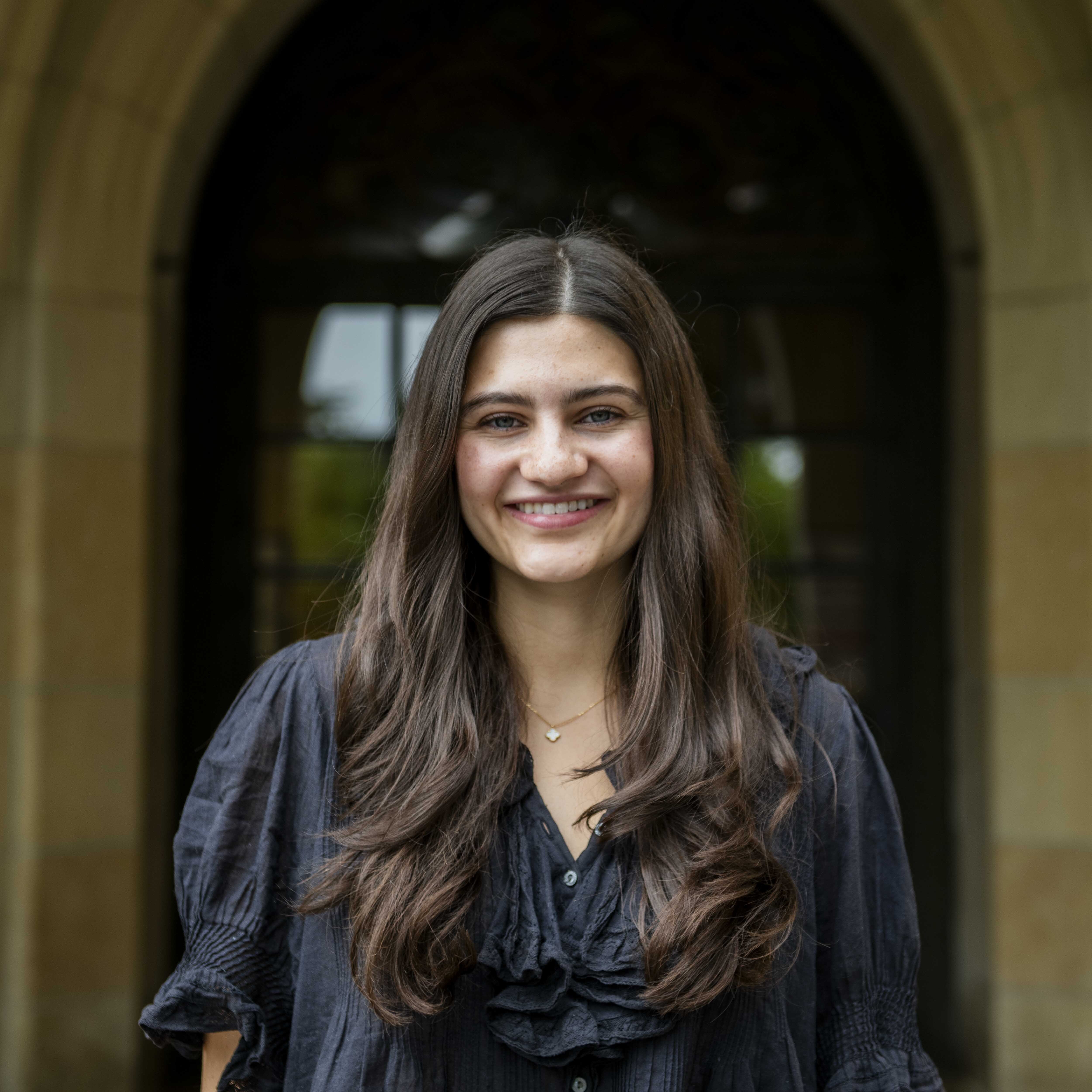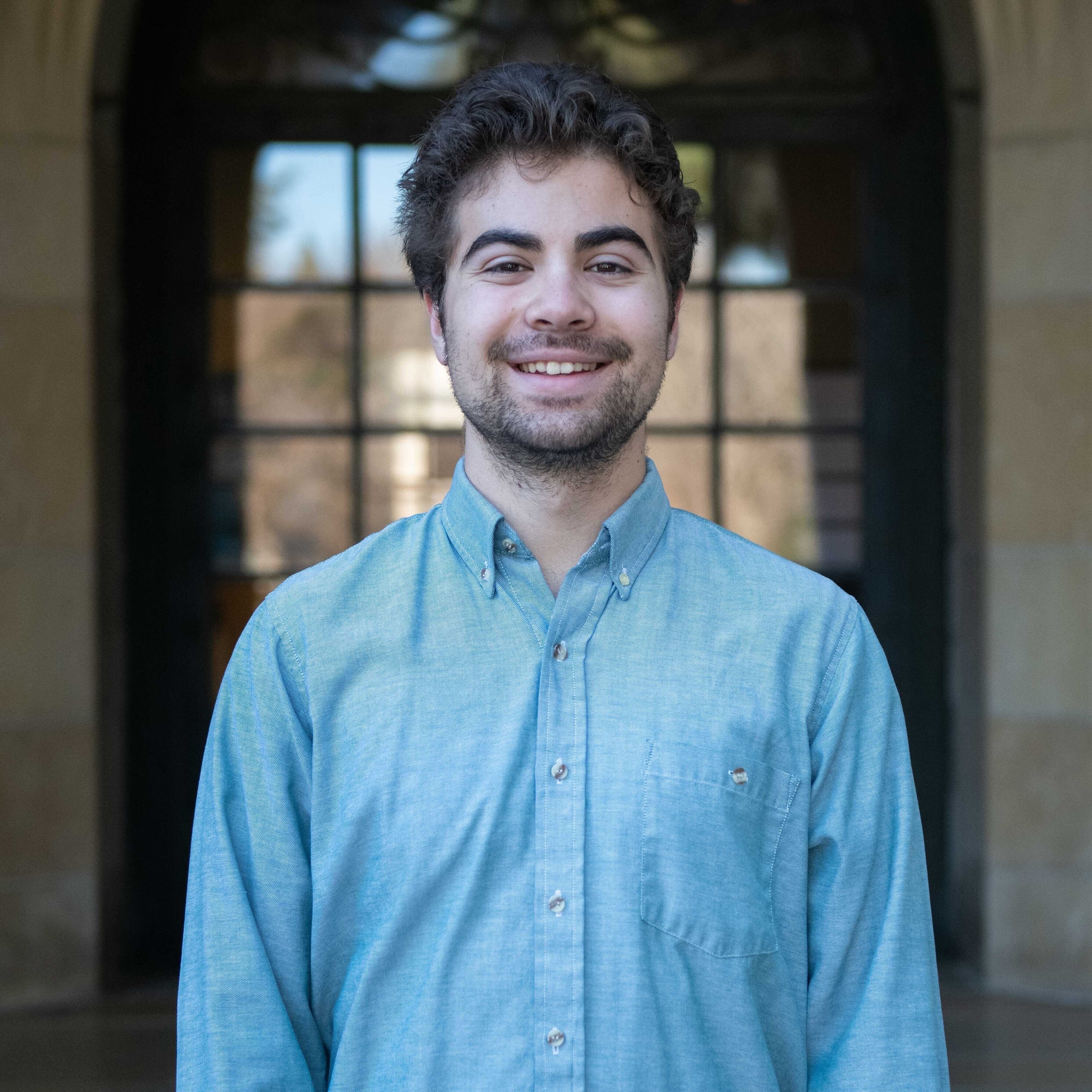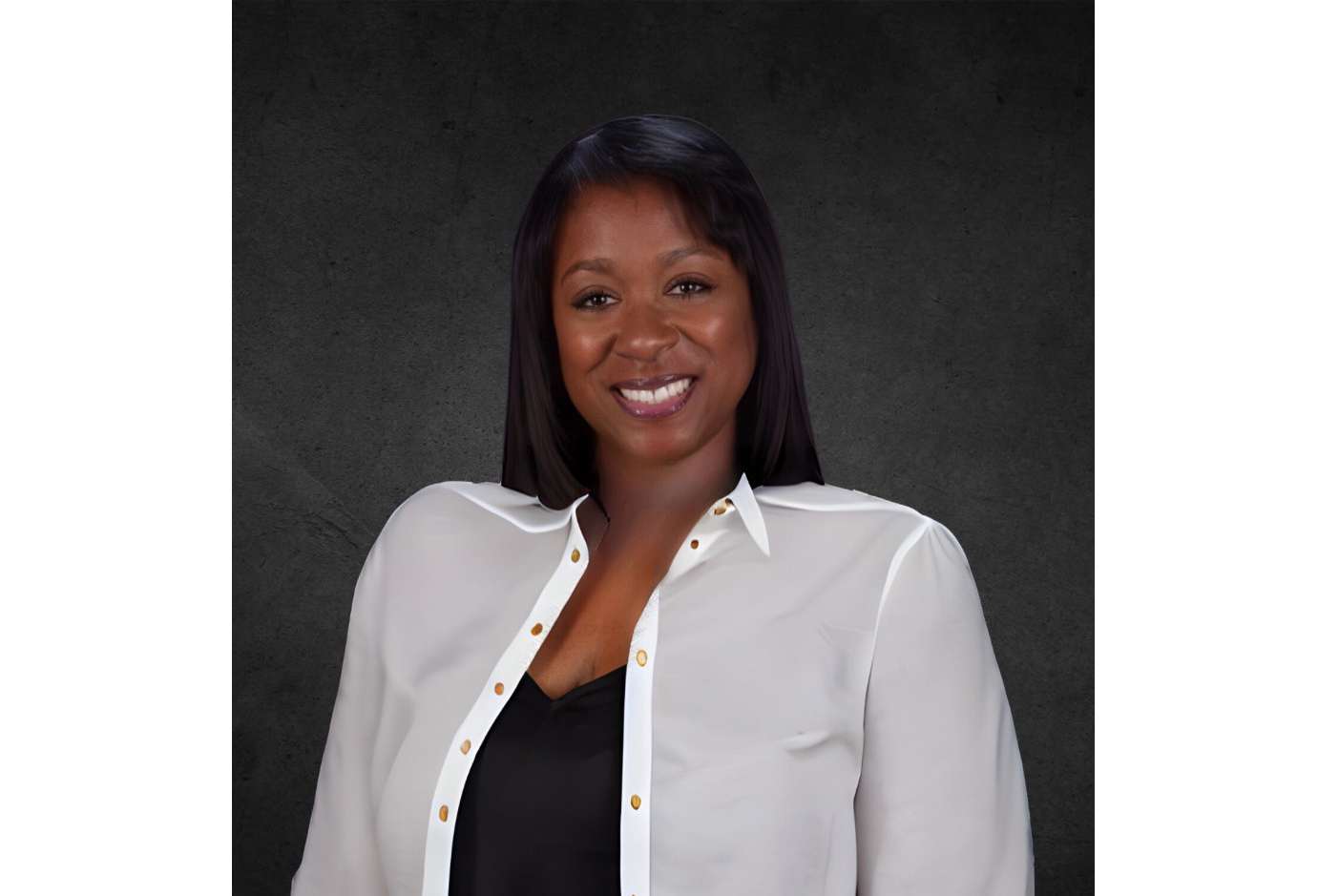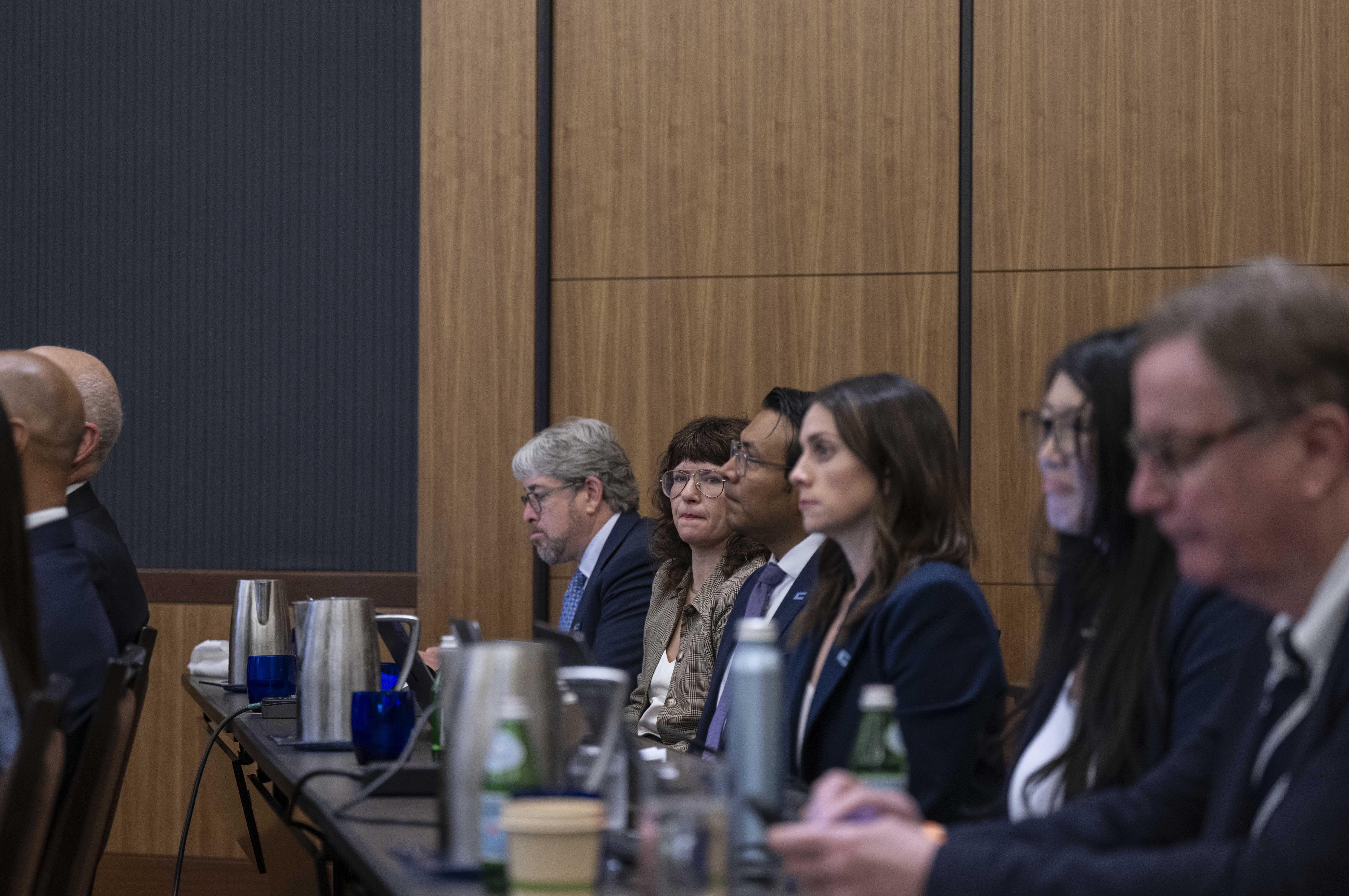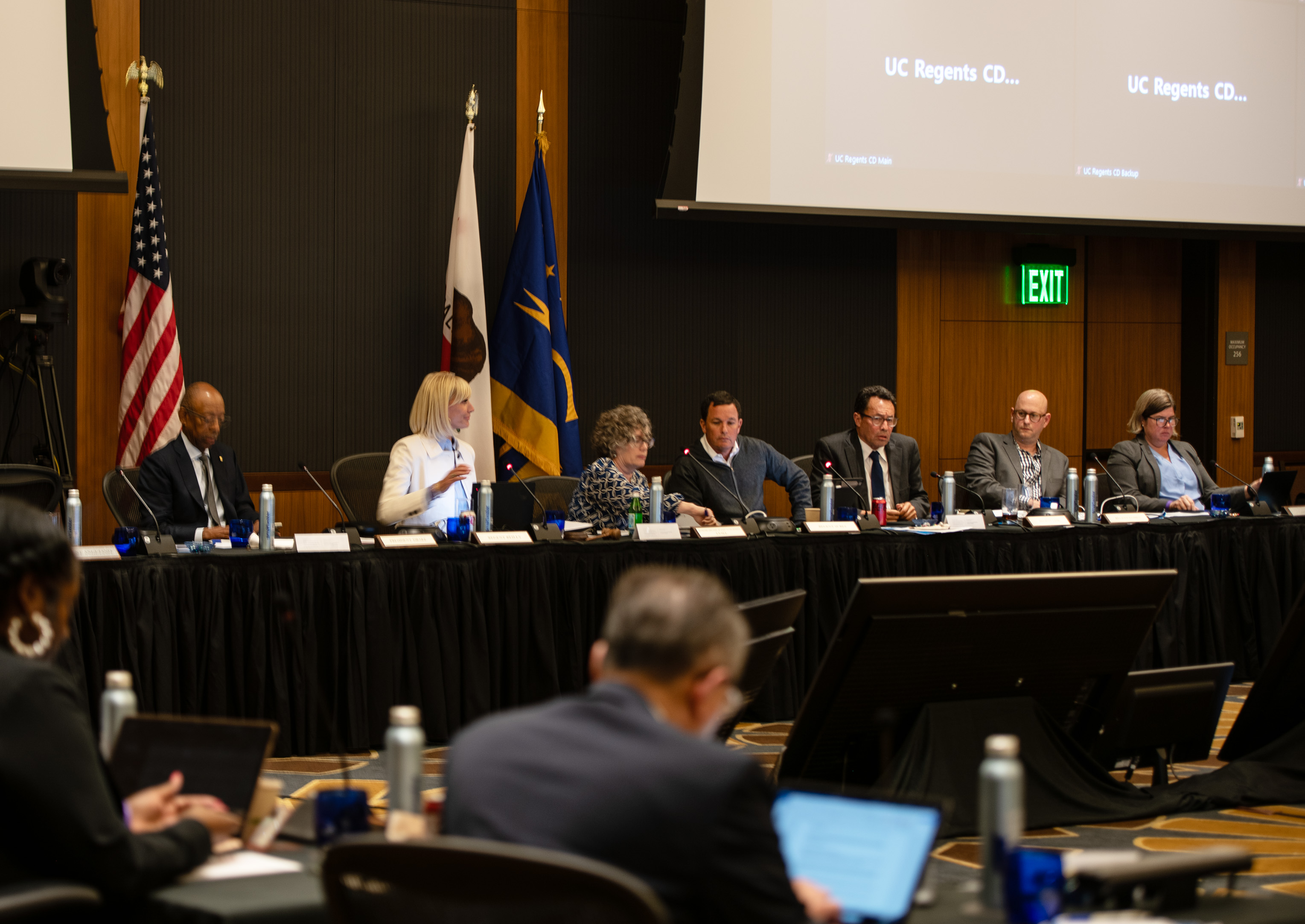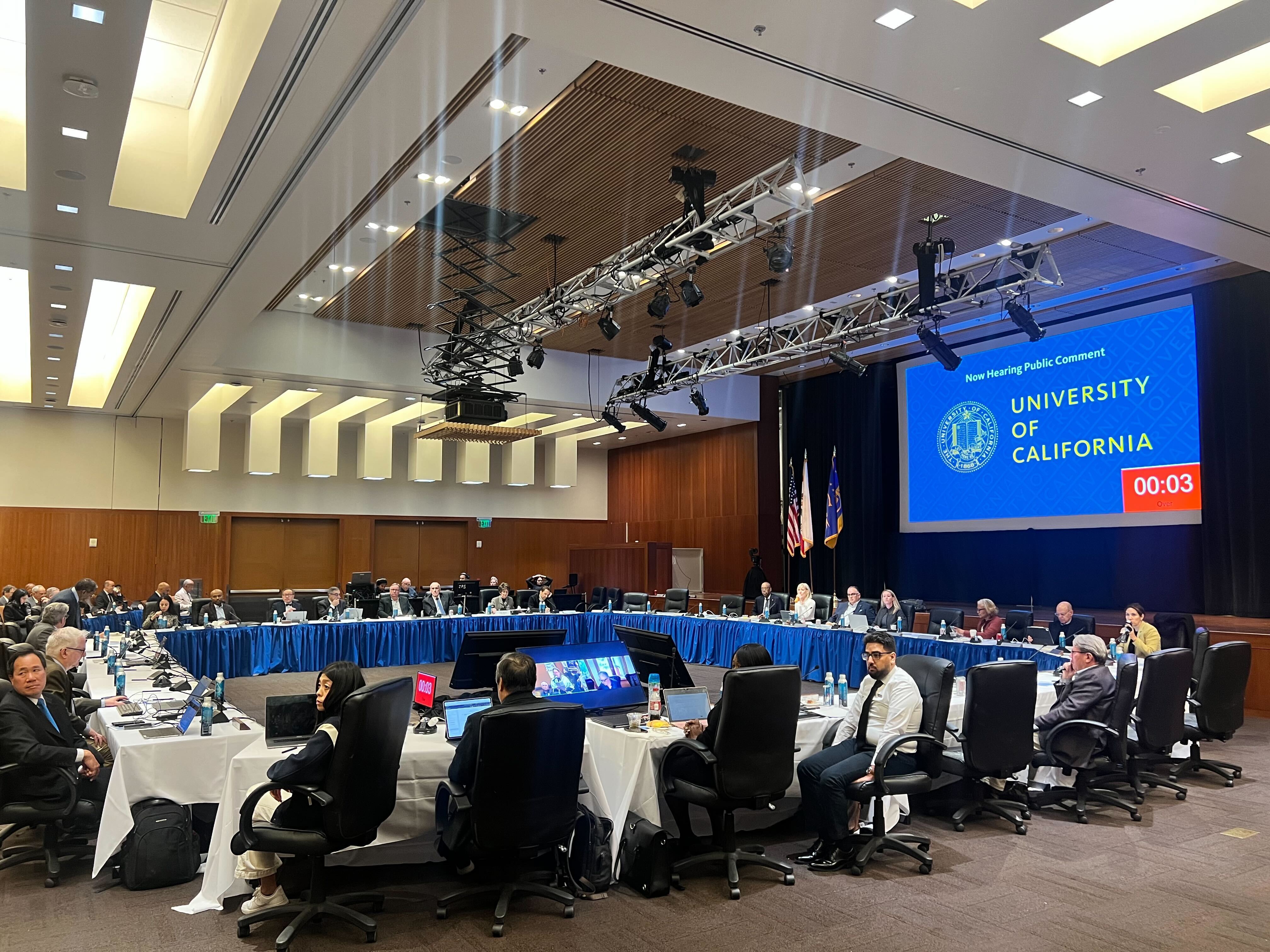UC Regents discuss new student opportunities, policies to promote inclusion
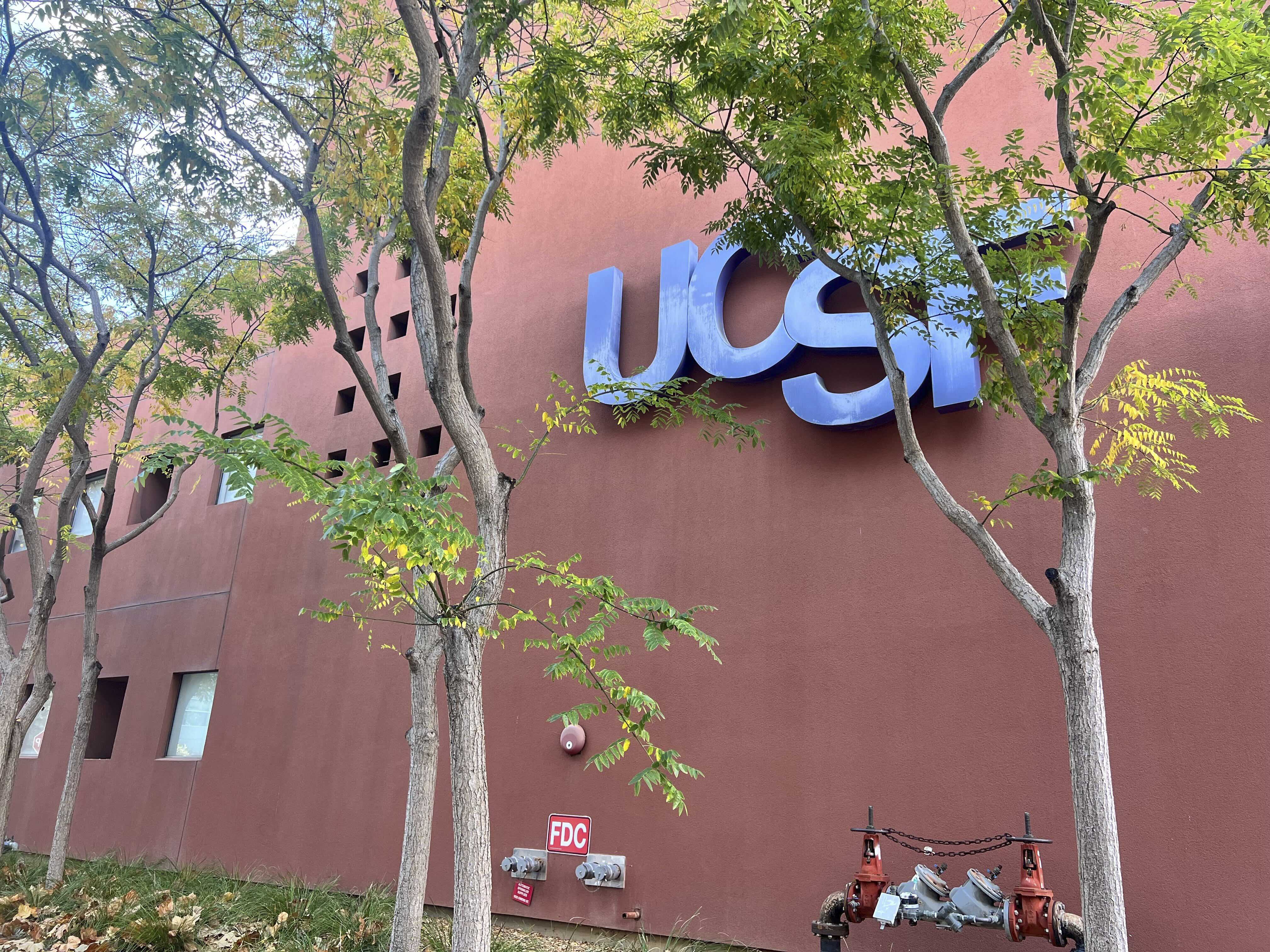
UC San Francisco is pictured. The UC Board of Regents held its November meeting at UCSF from Tuesday through Thursday. (Sam Mulick/Daily Bruin senior staff)
This post was updated Nov. 18 at 1:03 a.m.
SAN FRANCISCO – The UC Board of Regents introduced new academic opportunities and discussed diversity across the University at its Wednesday meeting.
The board held its bimonthly meeting Tuesday to Thursday at UC San Francisco. During the meeting, the academic and student affairs, governance, and public engagement and development committees met to discuss and vote on potential improvements for students across the UC.
The academic and student affairs committee unanimously voted to recommend the Strathearn Ranch Reserve be part of the University of California Natural Reserve System. The ranch, which would be managed by UC Santa Cruz, is the University’s 42nd reserve.
The UCNRS consists of protected public land throughout California and is the largest network of university field sites in the country, she said. The reserve will allow the UC to develop and test new solutions to environmental challenges, said Katherine Newman, the UC’s executive vice president of academic affairs.
“Students will have the opportunity to study ecology, conservation biology, geology and environmental science in an incredible natural setting,” said UCSC Chancellor Cynthia Larive during the meeting.
UCSC will also extend access to the reserve for local K-12 schools and collaborate with tribal groups, Larive said.
Research on the reserve will include the impacts of tribal communities on the land, said Gage Dayton, administrative director of natural reserves at UCSC.
The academic and student affairs committee also discussed the impact of artificial intelligence on the UC. Researchers across the University are currently studying how people can use this technology practically, added Newman.
[Related: UCLA to become first California university to offer ChatGPT Enterprise accounts]
At the meeting, Joshua Viers, associate vice chancellor for interdisciplinary research and strategic initiatives at UC Merced, introduced the AI Institute for Transforming Workforce & Decision Support (AgAID), a program funded by $20 million from the United States Department of Agriculture. The program allows researchers to forecast extreme weather events and optimize mechanical harvesting on farms, he said.
“Our mission at AgAID is to develop technological solutions that integrate AI into agriculture to solve critical issues such as water scarcity, labor shortages and complex farm operations,” Viers said. “At the core of the AgAID’s mission is the development of artificial intelligence that is safe, appropriate, accessible and affordable.”
İlkay Altıntaş, a research scientist at UC San Diego and the founder of the WIFIRE Lab, said she used AI tools to develop both reactive and proactive models to prevent wildfires.
Giovanni Vigna, director of the National Science Foundation AI Institute for Agent-based Cyber Threat Intelligence and Operation at UC Santa Barbara, said his organization focuses on creating agents that can assess the security of infrastructure and detect and respond to cyberattacks, adding that his organization is beginning to integrate AI with its work.
“The basic idea is to bring forward the new paradigm to create security applications that use AI in order to reason and learn from and act on visual critical networks,” he said.
The meeting then pivoted to discuss the UC 2030: Equity is Excellence report, a series of goals outlined by the UC to increase the number of graduates and graduation rate and to promote timely graduation systemwide.
Pamela Brown, vice president of UC Institutional Research and Academic Planning, gave an update on the UC 2030: Equity is Excellence goals. Systemwide, the UC has a goal of 76% four-year graduation rate for first-year students but is currently at 73%. UCLA specifically has an 85.3% four-year graduation rate for first-year students compared to its goal of an 86% rate.
The last item of the meeting was an update on federal financial aid in the UC, including how the delay of this year’s FAFSA and aid distribution affected students.
Shawn Brick, the associate vice provost for student financial support, said this year’s changes to FAFSA submission forms caused significant disruptions and delays to students receiving federal financial aid.
“The truly disruptive piece of this process was that the FAFSA data was not sent to schools until months late – until March and into April – when we normally would get that information three days after a student files their FAFSA,” he said.
Brick added that although some students are still experiencing delays with their financial aid, the majority of students have received their offers and financial aid for the fall.
Audrey Jacobs, the student observer of the academic and student affairs committee, said the delays negatively affected socioeconomically disadvantaged students, and 10% of students at UC Irvine have not yet received their financial aid disbursement.
“The delay in reimbursement can affect much more than just class registration,” added Jacobs, a third-year Asian American Studies and gender, sexuality and women’s studies student at UC Davis. “Students may rely on their reimbursement to pay rent, buy groceries and other basic needs.”
Regent Richard Leib asked the committee to invite more students to present their experiences with the delay in financial aid, adding that it is the board’s mission to improve upon student feedback. UC Merced Chancellor Juan Sánchez Muñoz said it is important to note that FAFSA problems have not yet been fully resolved and could still affect students’ ability to attend college.
“When you grow up poor, you are resilient, and you learn how to be tenacious,” he said. “On the other hand, if I can’t determine whether I have this amount of money for college, then I determine I can’t go.”
[Related: UC Board of Regents recommends tuition increase for out-of-state students]
During the governance committee meeting, UC Vice President for Systemwide Human Resources Cheryl Lloyd provided the biennial report on diversity in campus and systemwide executive searches.
The report found that the UC retained a diverse candidate pool throughout each stage of the recruitment process for Senior Management Group leaders – including campus chancellors and vice chancellors – between March 2022 and February 2024, Lloyd said. It also found that the UC has increased diversity in its SMG population between March 2020 and February 2024, she added.
Regent Maria Anguiano said she has concerns about the low number of Latino candidates in the Senior Management Group applicant pool. Regent John Pérez added that he believes this lack of representation for California’s largest population group is a blind spot in the UC’s recruitment.
“Looking at the numbers, there’s clearly something wrong with our process,” Anguiano said. “We’d really love to see something in the future where we dig into why this number is so low – it’s in the single digits.”
[Related: University of Miami President Julio Frenk announced as UCLA’s new chancellor]
The Regents also voted to amend the policy on the UC’s Diversity Statement to more thoroughly include people with disabilities. The new statement replaced the words “abilities/disabilities” with “disability” in describing the diverse identities of the UC student body.
“When I read that (the original language) in my mind, that referred to people who are not disabled, and I wanted to redefine who we are serving – students, staff and faculty with disabilities,” said Ryan Manriquez, a UC Berkeley student who drafted the amendments.
The revised policy also added “inclusion and accessibility” to the UC’s explanation of its core mission.
“We really are trying to emphasize disability and accessibility as key components of our diversity mission,” Manriquez said. “You can’t have full inclusion without addressing the needs of this community.”


